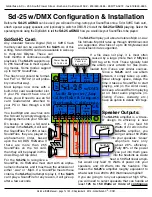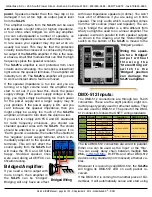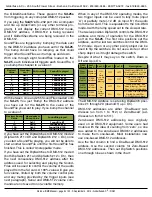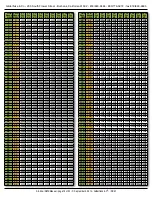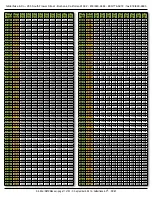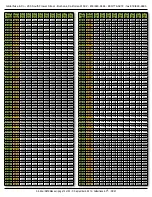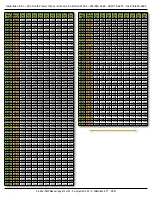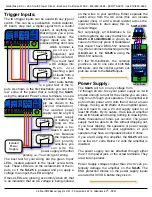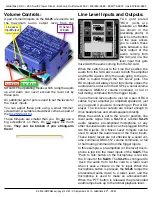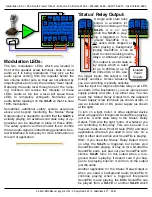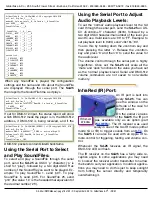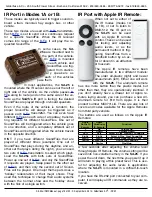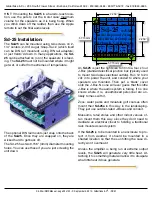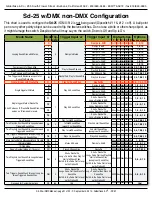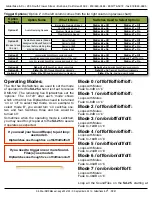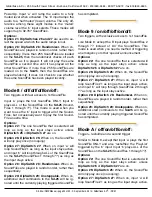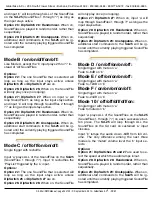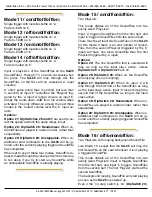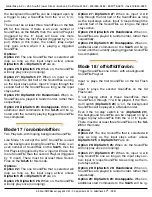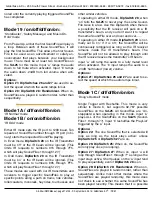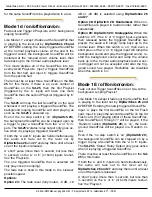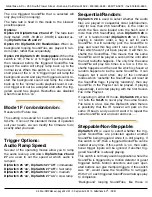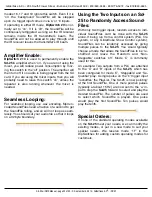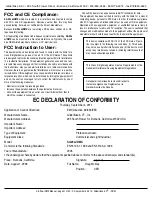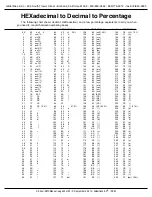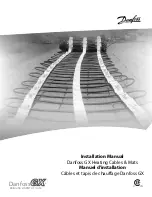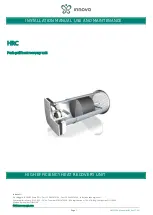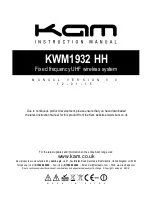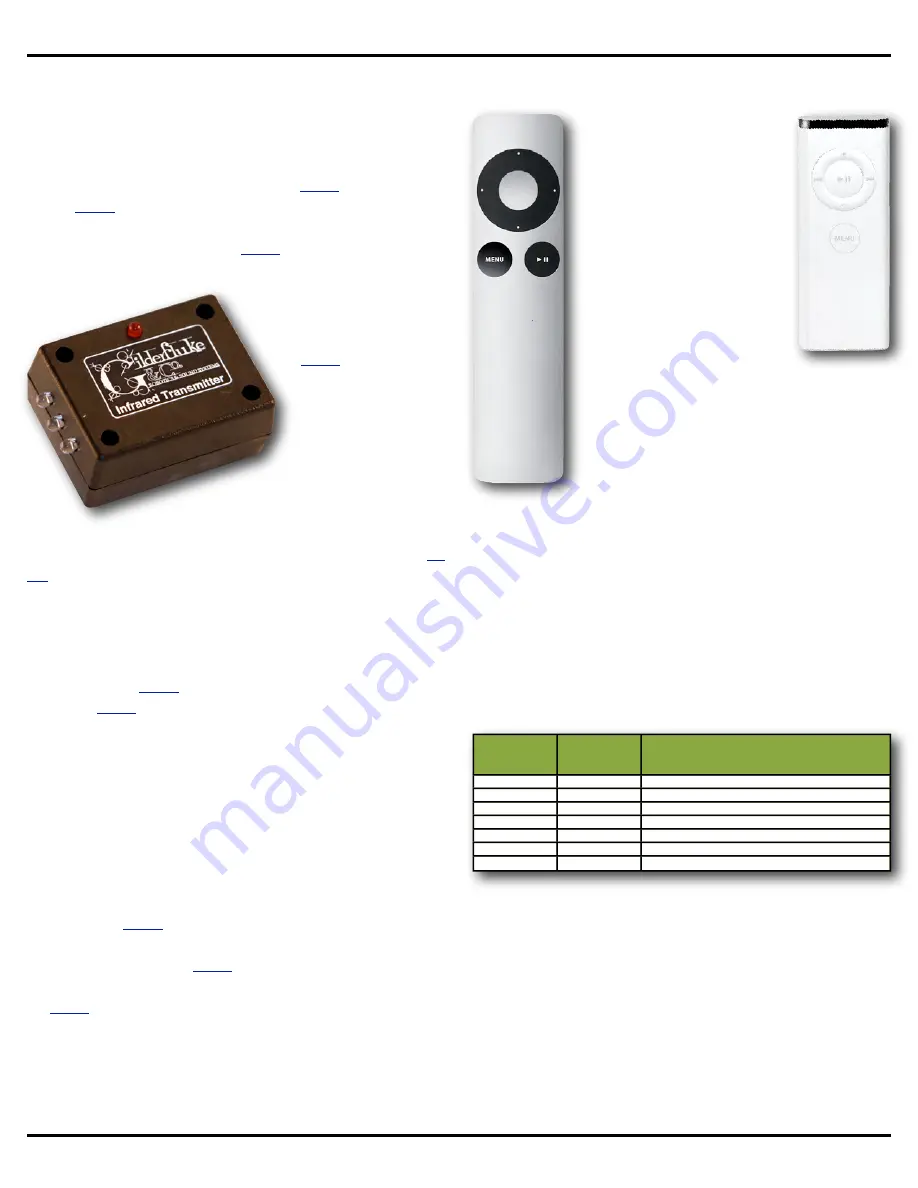
IR Port in Modes 1A or 1B:
These modes are typically used to trigger sound on-
board a train, monorail, hay wagon, bus, or other
vehicle.
These two modes are used with
transmitters.
Each
is set to send out a continuous request
for a specific SoundFile. When the IR receiver
comes into range of the
, it will play the re-
quested SoundFile.
In some cases, the
Sd-
25s
are mounted next to
the path of the vehicle.
An
on each vehicle, and
SoundFiles are trig-
gered from station-
a ry s p ea k e rs a s
each of the vehicles
pass them.
In most applications, the
Sd-25
is
mounted where the IR sensor can see out the left or
right side of the vehicle. As the vehicle passes
s
along its route (and on the same side of the ve-
hicle as the
Sd-25
ʼ
s
IR port is facing), the desired
SoundFiles are played through on-board speakers.
Even if the route of the vehicle is
ʻ
random
ʼ
, the
proper SoundFile will always be triggered as it
passes each
transmitter. You can even have
different
s
on each side of a roadway, transmit-
ting requests for different SoundFiles. One set of
SoundFiles will be triggered when the vehicle goes
in one direction, and a completely different set of
SoundFiles will be triggered when the vehicle travels
in the opposite direction.
HINT: if you have different SoundFiles that are
played at different times (example: One set of
SoundFiles that plays during the daytime, and an-
other set that plays during the night), you can used
two sets of
transmitters to select which plays.
Load the
Sd-25s
with both sets of SoundFiles.
Power up one set of
s, and only the SoundFiles
it requests are played. Swap power to the other set
of
, and then only the second set of Sound-
Files will be played. One major theme park does a
ʻ
holiday
ʼ
redecoration of their major shows. They
used this technique to change their audio systems
between the
ʻ
normal
ʼ
show and the
ʻ
holiday
ʼ
show
with the flick of a single switch.
IR Port with Apple IR Remote:
When not set to either of
the IR modes (modes 1A
or 1B), or set to listen to
DMX-512, the IR port on
the
Sd-25
can be used
with an Apple IR remote
control. These can be used
for testing and adjusting
audio levels, or as the
permanent method of trig-
gering SoundFiles from a
handheld button by an ac-
tor or docent in an attraction
or museum.
The Apple IR remotes have been
manufactured in two different models:
The older all-plastic (right) and newer
all-aluminum (left). Either one will work
with the
Sd-25
. The aluminum remote
has one more button than the plastic model, but
other than that, they are operationally identical. If
you don
ʼ
t already have a drawer full of Apple re-
motes laying around, you can purchase a new All-
Aluminum remote for $19 from Apple. It is their
product number MC377LL/A. There are also lots of
covers and cozies available for the Apple Remotes
from third party vendors.
The buttons are used as follows on the Apple IR
Remotes:
Apple
Plastic IR
Remote
Apple
Aluminum
IR Remote
Function
+
Up
Volume Up
-
Down
Volume Down
Left
Left
Select & Play ‘Previous’ SoundFile
Right
Right
Select & Play ‘Next’ SoundFile
Menu
Menu
Player Status Updated on RS-232 Port
Center
Pause/Play
Play/Pause/Continue
Center
Play/Stop
A few seconds after adjusting the volume level
through Apple IR Remote, the volume setting will be
saved into non-volatile memory in the
Sd-25
. If you
power the unit down, the next time you power it up it
will return to playing at this preset level. This is use-
ful for adjusting the audio levels in applications
where the
Sd-25
is mounted in a difficult-to-reach
location.
If you have the RS-232 port connected to your com-
puter, it will display all IR commands as they are re-
ceived.
Gilderfluke & Co.• 205 South Flower Street • Burbank, California 91502 • 818/840-9484 • 800/776-5972 • fax 818/840-9485
Sd-25 w/DMX Manual • page 19 of 32 • © September 4, 2014 • Gilderfluke & Co. • DCM



